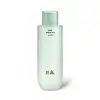What's inside
What's inside
 Key Ingredients
Key Ingredients

 Benefits
Benefits

 Concerns
Concerns

 Ingredients Side-by-side
Ingredients Side-by-side

Water
Skin ConditioningAlcohol
AntimicrobialButylene Glycol
HumectantSodium Hyaluronate
HumectantGlycerin
HumectantVolcanic Rock
AbrasiveBetaine
HumectantPhenoxyethanol
PreservativePPG-26-Buteth-26
Skin ConditioningPEG-40 Hydrogenated Castor Oil
EmulsifyingMethylparaben
PreservativeHydrolyzed Collagen
EmollientHamamelis Virginiana Extract
AntiseborrhoeicAloe Barbadensis Leaf Extract
EmollientCamellia Sinensis Leaf Extract
AntimicrobialMyrciaria Dubia Fruit Extract
Skin ConditioningMalpighia Emarginata Fruit Extract
Skin ConditioningEuterpe Oleracea Fruit Extract
Glycyrrhiza Inflata Root Extract
Skin ConditioningPaeonia Lactiflora Bark/Sap Extract
Skin ConditioningLilium Tigrinum Extract
Skin ConditioningCucurbita Pepo Fruit Extract
Skin ConditioningSolanum Lycopersicum Fruit Extract
AntioxidantAllantoin
Skin ConditioningParfum
MaskingSodium Citrate
BufferingDisodium EDTA
Malva Sylvestris Flower Extract
Skin ConditioningLeontopodium Alpinum Extract
Skin ConditioningAloe Vera Callus Extract
AntioxidantCamellia Sinensis Callus Culture Extract
PerfumingBambusa Vulgaris Callus Culture Extract
Skin ConditioningSh-Oligopeptide-1
Skin ConditioningHydrogenated Lecithin
EmulsifyingPotassium Cetyl Phosphate
EmulsifyingCaprylic/Capric Triglyceride
MaskingAminomethyl Propanol
BufferingWater, Alcohol, Butylene Glycol, Sodium Hyaluronate, Glycerin, Volcanic Rock, Betaine, Phenoxyethanol, PPG-26-Buteth-26, PEG-40 Hydrogenated Castor Oil, Methylparaben, Hydrolyzed Collagen, Hamamelis Virginiana Extract, Aloe Barbadensis Leaf Extract, Camellia Sinensis Leaf Extract, Myrciaria Dubia Fruit Extract, Malpighia Emarginata Fruit Extract, Euterpe Oleracea Fruit Extract, Glycyrrhiza Inflata Root Extract, Paeonia Lactiflora Bark/Sap Extract, Lilium Tigrinum Extract, Cucurbita Pepo Fruit Extract, Solanum Lycopersicum Fruit Extract, Allantoin, Parfum, Sodium Citrate, Disodium EDTA, Malva Sylvestris Flower Extract, Leontopodium Alpinum Extract, Aloe Vera Callus Extract, Camellia Sinensis Callus Culture Extract, Bambusa Vulgaris Callus Culture Extract, Sh-Oligopeptide-1, Hydrogenated Lecithin, Potassium Cetyl Phosphate, Caprylic/Capric Triglyceride, Aminomethyl Propanol
Water
Skin ConditioningButylene Glycol
HumectantBetaine
HumectantGlycerin
Humectant1,2-Hexanediol
Skin ConditioningPanthenol
Skin ConditioningPPG-13-Decyltetradeceth-24
Emulsifying2,3-Butanediol
HumectantParfum
MaskingEthylhexylglycerin
Skin ConditioningXanthan Gum
EmulsifyingDisodium EDTA
Propanediol
SolventLecithin
EmollientLactobacillus Ferment
Skin ConditioningInulin Lauryl Carbamate
Emulsion StabilisingPinus Mugo Twig Leaf Extract
PerfumingTocopherol
AntioxidantCentella Asiatica Flower/Leaf/Stem Extract
Skin ConditioningWater, Butylene Glycol, Betaine, Glycerin, 1,2-Hexanediol, Panthenol, PPG-13-Decyltetradeceth-24, 2,3-Butanediol, Parfum, Ethylhexylglycerin, Xanthan Gum, Disodium EDTA, Propanediol, Lecithin, Lactobacillus Ferment, Inulin Lauryl Carbamate, Pinus Mugo Twig Leaf Extract, Tocopherol, Centella Asiatica Flower/Leaf/Stem Extract
Ingredients Explained
These ingredients are found in both products.
Ingredients higher up in an ingredient list are typically present in a larger amount.
Betaine is a common humectant (a substance that promotes retention of moisture). It's known to be gentle on the skin and can help balance hydration.
This ingredient is best for improving hydration and soothing irritated skin. Studies also show it helps even out skin tone.
Fun fact: Betaine is naturally created in the skin and body. The kind found within cosmetic products can be either plant-derived or synthetic.
Another name for betaine is trimethylglycine.
Learn more about BetaineButylene Glycol (or BG) is used within cosmetic products for a few different reasons:
Overall, Butylene Glycol is a safe and well-rounded ingredient that works well with other ingredients.
Though this ingredient works well with most skin types, some people with sensitive skin may experience a reaction such as allergic rashes, closed comedones, or itchiness.
Learn more about Butylene GlycolDisodium EDTA plays a role in making products more stable by aiding other preservatives.
It is a chelating agent, meaning it neutralizes metal ions that may be found in a product.
Disodium EDTA is a salt of edetic acid and is found to be safe in cosmetic ingredients.
Learn more about Disodium EDTAGlycerin is already naturally found in your skin. It helps moisturize and protect your skin.
A study from 2016 found glycerin to be more effective as a humectant than AHAs and hyaluronic acid.
As a humectant, it helps the skin stay hydrated by pulling moisture to your skin. The low molecular weight of glycerin allows it to pull moisture into the deeper layers of your skin.
Hydrated skin improves your skin barrier; Your skin barrier helps protect against irritants and bacteria.
Glycerin has also been found to have antimicrobial and antiviral properties. Due to these properties, glycerin is often used in wound and burn treatments.
In cosmetics, glycerin is usually derived from plants such as soybean or palm. However, it can also be sourced from animals, such as tallow or animal fat.
This ingredient is organic, colorless, odorless, and non-toxic.
Glycerin is the name for this ingredient in American English. British English uses Glycerol/Glycerine.
Learn more about GlycerinParfum is a catch-all term for an ingredient or more that is used to give a scent to products.
Also called "fragrance", this ingredient can be a blend of hundreds of chemicals or plant oils. This means every product with "fragrance" or "parfum" in the ingredients list is a different mixture.
For instance, Habanolide is a proprietary trade name for a specific aroma chemical. When used as a fragrance ingredient in cosmetics, most aroma chemicals fall under the broad labeling category of “FRAGRANCE” or “PARFUM” according to EU and US regulations.
The term 'parfum' or 'fragrance' is not regulated in many countries. In many cases, it is up to the brand to define this term.
For instance, many brands choose to label themselves as "fragrance-free" because they are not using synthetic fragrances. However, their products may still contain ingredients such as essential oils that are considered a fragrance by INCI standards.
One example is Calendula flower extract. Calendula is an essential oil that still imparts a scent or 'fragrance'.
Depending on the blend, the ingredients in the mixture can cause allergies and sensitivities on the skin. Some ingredients that are known EU allergens include linalool and citronellol.
Parfum can also be used to mask or cover an unpleasant scent.
The bottom line is: not all fragrances/parfum/ingredients are created equally. If you are worried about fragrances, we recommend taking a closer look at an ingredient. And of course, we always recommend speaking with a professional.
Learn more about ParfumWater. It's the most common cosmetic ingredient of all. You'll usually see it at the top of ingredient lists, meaning that it makes up the largest part of the product.
So why is it so popular? Water most often acts as a solvent - this means that it helps dissolve other ingredients into the formulation.
You'll also recognize water as that liquid we all need to stay alive. If you see this, drink a glass of water. Stay hydrated!
Learn more about Water